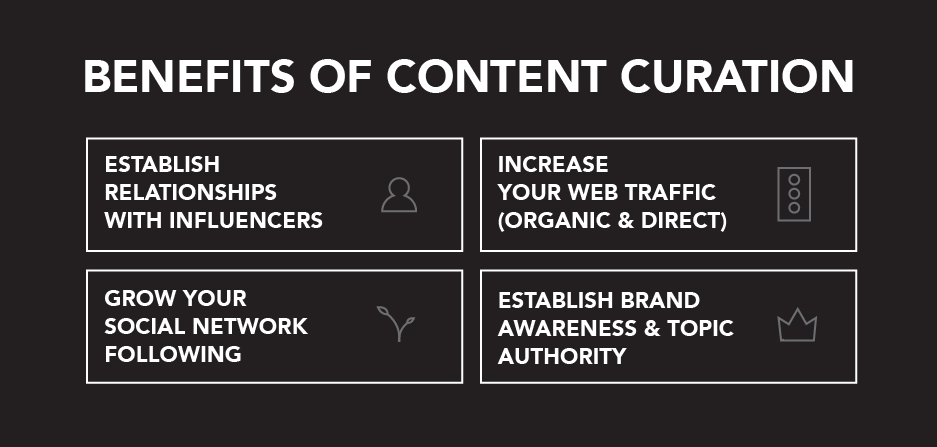
No matter if you are just starting an online business or an expert, outsourcing your content writing will be a smart move. Below are some tips that will ensure your content gets the best possible results. Creating a buyer persona is a great way to create compelling content. To attract customers, you can use keywords and include persuasive words to persuade.
Creating buyer personas
Creating buyer personas is an excellent way to create content that targets the most likely buyers for your product or service. You can tailor your content to meet the needs of your buyers by understanding their motivations and goals. You can then use these buyer personas as a guide for your marketing team and create copy that addresses their specific needs. This article will highlight the most important things to keep in mind while creating buyer personas for your ecommerce content writing.
To create buyer personas, you must first learn about the habits of your target audience. You can look at the approach of your competitors to your target audience. Are they using surveys or web forms to reach their target audience? Which services or products are they most interested? Can you identify the characteristics of these buyers? If you have data about your target markets, you can create buyer personas. It is possible to create content that is relevant and effective for your site by creating buyer personas.
After developing your buyer personas, you should distribute them to your marketing and sales team so that everyone is familiar with them. Remember that personas are never complete. They will continue to evolve as your business grows. You should keep them updated as necessary. Your buyer persona must reflect your customer's journey from first purchase to last. This article will cover the most important steps to creating buyer personas.
Using keywords
Consider these factors when you are using keywords to write ecommerce content. Keyword difficulty should be considered. This measure shows the difficulty in ranking for a keyword on Google. This information can be found using tools like SEMrush's Keyword Difficulty tool or Ahrefs Domain Rating (DR). You should ensure that your keywords are not too competitive and have a transactional intent.
Firstly, research your keywords. It may not seem obvious but keywords are an essential component of SEO. Google can penalize a website for using too many keywords. This problem can be avoided by using long-tail keywords within your content. You should, for example, include the phrase "nike sneakers" in your product description if you sell sneakers. You can increase the chances of your content being ranked by using a wider, more targeted, and unique keyword strategy.
Another factor that should be taken into account is keyword density. Keyword density is an important consideration. While long-tail keyword have lower competition, shorter-tail keywords can be more specific. The luxury car service New York is an example of a long tail keyword. A region can be added to the keyword to improve SEO. This allows local customers to find your business. It is best to avoid keyword spamming. However, you must remember that keywords can only be used when they are essential.
Static content creation

It is now easier than ever to create static content for your ecommerce website. It is easier than ever to create static content for an ecommerce site. You should have a complete list of all SKU codes that are applicable to the products you sell. An important step in building a website with a high conversion ratio is to keep your SKU codes up-to-date. You can also build your brand and increase traffic by having a complete product catalog.
Dynamic content allows for a better user experience. Conversions are increased when there is more relevant content. This article describes how dynamic web content can be modified based on user inputs and matches customer segments to product segments. Websites that sell dynamic content have many advantages. More information is available below. Once you have decided which one works best on your site, it's time to start creating dynamic content.
Many people don't possess the ability or time to create HTML code. Fortunately, there are static site generators that solve this problem. These programs produce web pages much more easy to maintain and load that dynamically generated content. The static content generators are usually not equipped with a WYSIWYG editor. However, they offer a command line interface that can be used to create new content. While static site generators are not meant to be used in place of content management systems, they can provide a great alternative for ecommerce sites.
Use persuasive words
Writing eCommerce content requires persuasive words. Customers associate truthfulness as easier content. Many of these customers have to deal with tensions and struggles before buying. Distracting statements can be used to shift their attention away from the struggle. Here are some persuasive words to help make your content more compelling. Once you have mastered these words, you'll be well on your way to increasing sales.
Power words can create strong emotional reactions in a reader. They evoke a feeling in a customer, and they create a mental image of what the product will look like. These words are often called "power terms" in eCommerce content writing. Bangs Shoes is one example. Their product descriptions are full power words. This will result in increased sales. Remember, a compelling product description must be clear and easy to understand.
Customers often have short attention spans. The average person entering an eCommerce website is seeking answers to their questions and the right product. They aren't looking to do extensive research or to read a lot of books to make a purchase. When writing for eCommerce websites, be sure to consider both the user's and the store's perspectives. Make sure to give them all the details they need up front. If you can't write a compelling e-commerce copy, don't be afraid to challenge your readers.
Maintain technical features in back-end
Traditional ecommerce platforms closely link the front and back end of their system. While this makes it easy to deploy an online store quickly, it sacrifices flexibility and introduces new vulnerabilities. Shopify merchants that use apps often have problems with site performance. The addition of a small popup widget to your site may slow down the page and create vulnerabilities due to conflicts between JavaScript/CSS. The merchant may also have to adjust a widget to look exactly like an icon.
Designing landing pages

Landing pages can be a great way to attract more shoppers online by creating ecommerce content. Because visitors already know the brand and what the offer is, landing pages should be conversational. The landing pages must be persuasive and contain a call to actions button to direct them to next steps. It may seem cumbersome to create a unique marketing proposition (USP), but it will help you position your brand and structure your landing pages.
Before you begin creating a sales channel, consider who you are trying to reach. You should consider your email marketing goals, and your sales goals. These will help you determine whether your page is generating leads and converting them into customers. Google Analytics and email software are also options to track eCommerce landing page traffic. These topics will be discussed in detail in the next section.
It's not easy to develop a landing site. While you can have a header and a subheadline on a landingpage, your primary goal should still be to get customers to sign up for your email and make a purchase. If you want to improve your chances of converting customers, you might consider including a subheadline and an image in your eCommerce content writing. Make sure your headline is engaging and that you provide useful information. Your SEO can be improved by including case studies and testimonials.
FAQ
How often do you need SEO?
Maintaining your links properly will mean that you won't have to run SEO campaigns or update them often. However, if you stop maintaining your links and rely solely on organic traffic, you could lose out on potential business.
Generally speaking, monthly SEO updates are recommended for small businesses. For larger companies, quarterly updates might be necessary.
How much does SEO cost?
SEO costs are dependent on the size of your company and industry. For smaller businesses, it may be only a few hundred bucks per month. Larger companies will spend many thousands of dollars each month. To estimate how much SEO will cost you, use our SEO calculator.
What are the best tools for on-page optimization?
Video embeds and image alt tags are great tools for on-page optimization. Learn more about these topics in this article.
Where can I find my keywords?
First, you need to think about the type of products and services that you offer. Next, search for terms related to these things. Once you have your list of phrases in hand, you can use Google Keyword Planner tools to identify the phrases people search for. Or you can go straight to search engines like Bing or Yahoo.
How do I start SEO?
SEO is possible in many ways. It is important to first identify the keywords you wish to rank for. This process is called "keyword research." Next, optimize each page of your website for these keywords.
Optimization is the process of adding relevant titles and descriptions to your site, creating unique URLs and linking other websites. After optimization is completed, your website will be submitted to search engines such Google, Yahoo! and Bing.
You'll also need to keep track of your progress over time to know if you're succeeding or failing.
How often should I update my site?
Updating your site regularly can improve its rankings. It's not necessary. You don't necessarily need to keep it updated if you have already created quality content.
Statistics
- A 62.60% organic traffic boost to that page: (backlinko.com)
- And 90%+ of these backlinks cite a specific stat from my post: (backlinko.com)
- If two people in 10 clicks go to your site as a result, that is a 20% CTR. (semrush.com)
- These guides are designed and coded 100% from scratch using WordPress. (backlinko.com)
- Sean isn't alone… Blogger James Pearson recently axed hundreds of blog posts from his site… and his organic traffic increased by 30%: (backlinko.com)
External Links
How To
How do you set up your first blog?
It's simple! WordPress is a powerful tool for creating blogs. The user can modify the look and feel of their blog easily by adding themes and changing fonts and colors. They can also add plugins which allow them to alter certain aspects of their site based upon visitor activity.
WordPress.org offers many templates for free and premium templates that are more expensive. Premium templates offer additional features like extra pages and plugins as well as advanced security.
Once you've downloaded your template, you'll need to sign up for a free account with a hosting provider to upload your files and run your blog. Although many hosts offer free accounts with limited space, there are restrictions on the number of domains that you can host, how many emails you may send, and how many websites you can upload.
If you choose to use more then one domain name, each email address will be required. Some hosts charge a monthly subscription fee.
You might be new to blogging and wonder why it is worth paying to have your blog hosted online. Hosting companies offer unlimited storage, so your files won’t be deleted even though you delete them accidentally.
Many hosts permit multiple domain hosting. You can host several sites under one package. You don't need multiple email addresses and can manage all your sites through the one interface.
Some hosts include social media sharing buttons on their dashboards, allowing visitors to share posts across the internet quickly and easily.
Many hosting providers offer tools that allow you to manage your blog. You can view the performance stats of your website, see how many people visited each post, and compare your traffic with other blogs.
These tools can make managing your website easier and quicker, so it's worth taking a look at them before you commit to a hosting plan.
To sum up:
-
Choose a topic pertinent to your business.
-
Create engaging content;
-
Optimize your site using SEO techniques;
-
Promote your site using social media channels;
-
Monitor your statistics regularly to make changes where necessary;
-
Don't forget to update the blog often.
In short, create good content, promote it effectively, and track its success.